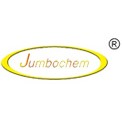b

Thank You!
Your requirement has been sent, we will contact you quickly!
Sent Failed!
Try again!
Molecular formula: CuSO4∙ H2O
Properties: light blue-white powder, executive standard: GB 34459-2017
project | Indicator |
Copper sulfate monohydrate (CuSO4•H2O) content ≥ | 98.5% |
Copper (Cu) content ≥ | 35.70% |
Arsenic (As) content ≤ | 0.0004% |
Lead (Pb) content ≤ | 0.0005% |
Cadmium (Cd) content ≤ | 0.00001% |
Fineness passed 200µm experimental sieve ≥ | 95% |
Function and use:Cu catalyzes Fe to participate in the formation of heme and promotes the maturation of early red blood cells.Cu is involved in the osteogenesis process of animals and is closely related to mitochondrial collagen metabolism and melanin production, participates in the pigmentation and keratinization of hair and feathers, and participates in the formation of enzyme-related Cu-containing proteins.Cu is a component of many enzymes (cytochrome oxidase, etc.), diketone ions are special activators of many enzymes (sulfide oxidase, iodine acidase), and copper sulfate is used as a Cu element supplement.
Features:As a new type of copper source feed additive, copper sulfate monohydrate has high copper content, good fluidity, less impurities and good water solubility.,
At present, copper sulfate pentahydrate, which is commonly added to feed, has a relatively simple production process and has many impurities. Because it has five crystal waters, the particles are large, easy to absorb moisture and agglomerate, with poor fluidity and poor mixing uniformity. At the same time, the residual free acid will corrode the production and processing equipment, destroy the vitamins in the feed, and accelerate the oxidation of unsaturated fatty acids.
Compared with copper sulfate pentahydrate, copper sulfate monohydrate has the following advantages:
1. High copper content, less addition, not easy to absorb moisture and agglomerate, durable and easy to use;
2. Fine particles, good fluidity, evenly distributed in the feed;
3. Less impurities can effectively reduce the damage of copper source feed additives to active ingredients such as vitamins and enzymes in premixes and concentrates. It is suitable for the production of medium and high-grade premixes and concentrated feeds, and also suitable for copper-containing chelates. And the production of medium and high-grade water-soluble fertilizers, the use is very wide.
Packaging, storage and transportation:The feed additive copper sulfate monohydrate is packed in food-grade low-pressure polyethylene film bags, and the outer layer is covered in polypropylene woven bags, 25kg or 1000kg per bag.
Feed grade copper sulfate should be stored in a dry and ventilated place, sealed and stored, and it is forbidden to mix with toxic substances.
During transportation, it should be handled with care, to prevent damage to the package, and not to be exposed to sunlight or rain.It is forbidden to store and transport together with toxic substances.

